|
Centrip Editorial Board
The Delicious Delicacies of Central Japan

Central Japan is home to Three Great Warlords, Nobunaga Oda, Hideyoshi Toyotomi, and Ieyasu Tokugawa, and the land of the samurai and ninja who served them. When you visit these legendary places and experience the region's culture, make sure you try out all the delicious delicacies Central Japan has to offer.
Table of Contents
Nagoya Castle
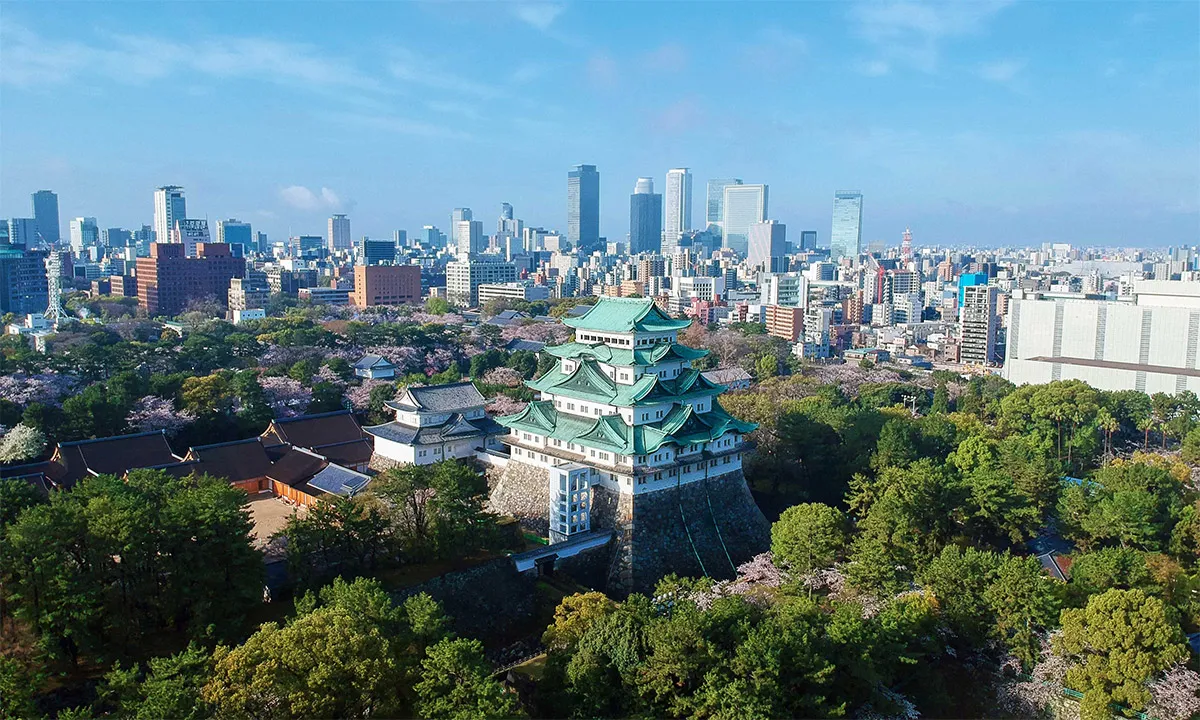 Nagoya Castle
Nagoya Castle
The area around Nagoya Castle, the former residence of the Owari Tokugawa family, is packed with local delicacies known colloquially as Nagoya-meshi (Nagoya cuisine). The closest place to eat near the castle is Kinshachi Yokocho, a gastronomic zone that opened in 2018.
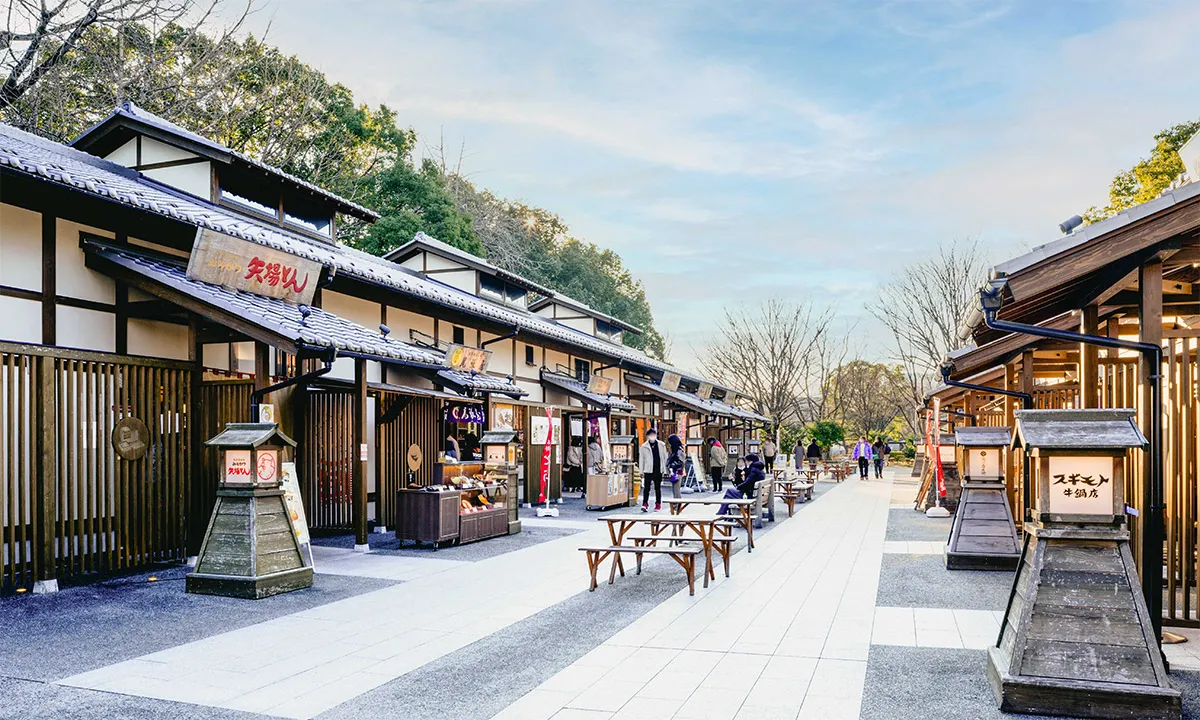 Sit down and enjoy some food in Kinshachi Yokocho
Sit down and enjoy some food in Kinshachi Yokocho
Here, you will discover a lineup of famous restaurants serving miso katsu (pork cutlet) and miso nikomi udon (noodles stewed in miso), both made with the region's signature miso, a favorite of the Three Great Warlords.
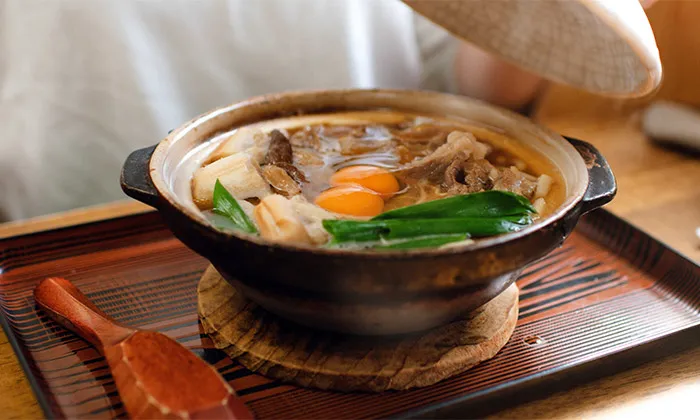 Miso nikomi udon
Miso nikomi udon
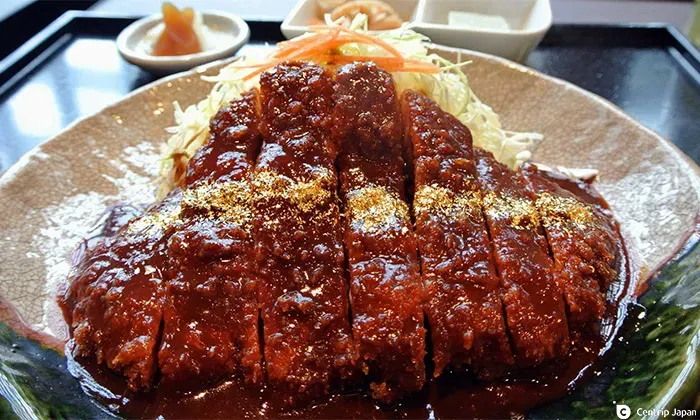 Miso pork cutlet
Miso pork cutlet
Miso katsu is a crispy fried pork cutlet topped with a generous amount of sweet and spicy Hatcho miso sauce and is top selling dish. Miso Nikomi Udon are udon noodles simmered in a miso soup until chewy and served lidded. The lid has no holes to prevent the soup from spilling and keeps it piping hot until you are ready to eat.
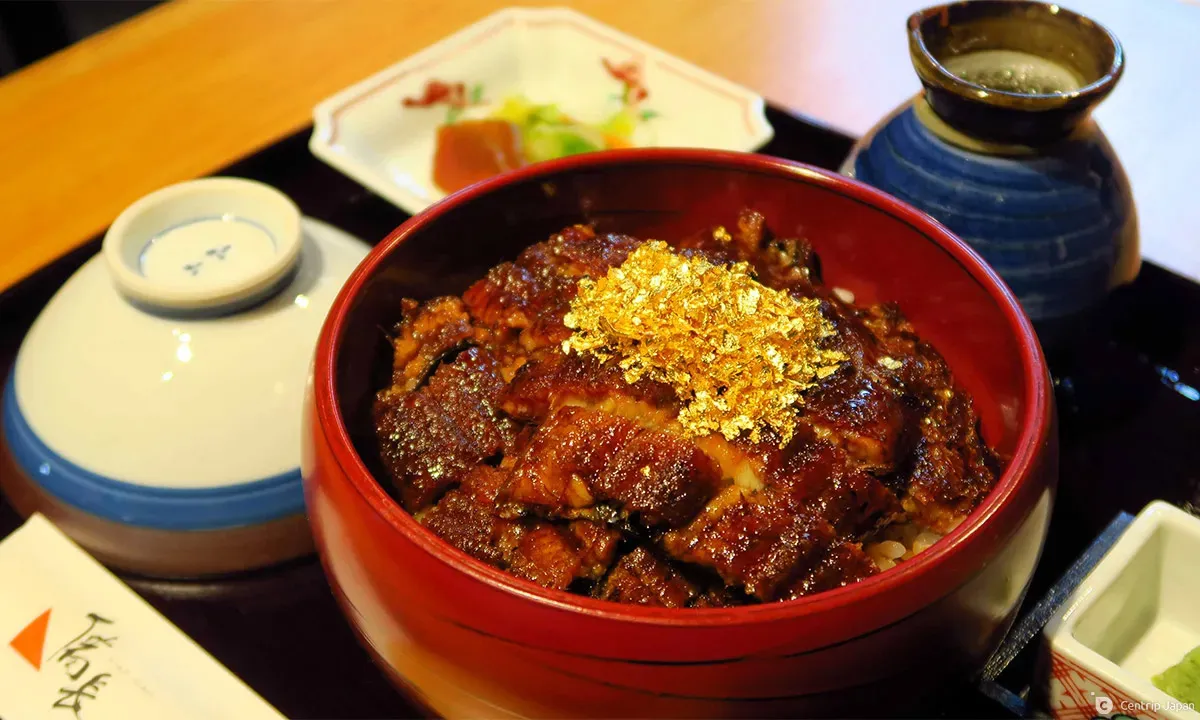 Hitsu-mabushi
Hitsu-mabushi
Hitsu-mabushi is another must-try dish when you are in Nagoya. Hitsu-mabushi gets its name from the rice tubit is served in. It consists of finely sliced broiled eel laid on top of rice, and you eat it several ways over the course of the meal by adding condiments (chopped seaweed, wasabi, and green onion). Pour some dashi broth over the rice and enjoy it as chazuke (rice with tea and other ingredients) to finish your meal. There are a few Hitsu-mabushi restaurants in Kinshachi Yokocho, but if you are in Nagoya, a visit to Atsuta Houraiken, the birthplace of Hitsu-mabushi, is a good idea.
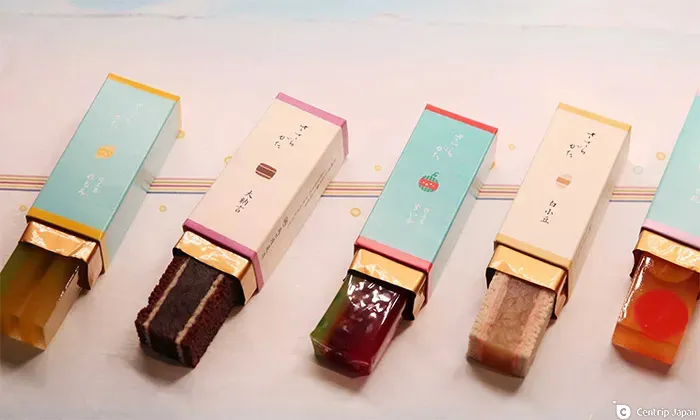 Uiro
Uiro
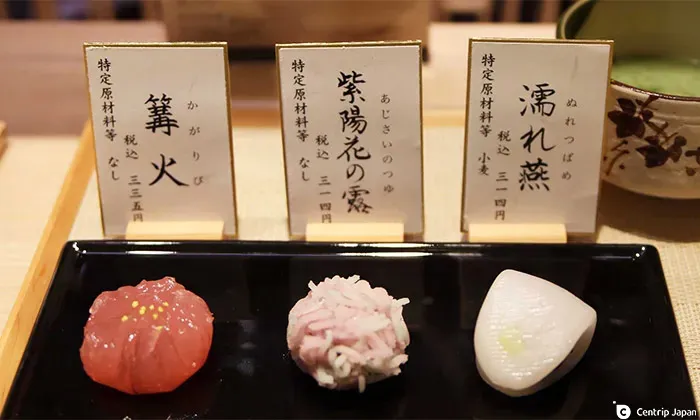 Wagashi
Wagashi
And we can't forget Nagoya's Wagashi (traditional Japanese sweets), a favorite of the Owari Tokugawa family since the Edo period (1603-1868), and developed together with the popularity of the tea ceremony. Uiro and yokan (sweet bean jelly) have a long shelf life and are ideal souvenirs. On the other hand, Nama-gashi (fresh sweets) taste best on the day they get made. These Nama-gashi, depicting the changing seasons, were made with skill, design, and the playful spirit of Japanese confectionery artisans. Be sure to savor the once-in-a-lifetime encounter only found with sweets made for a specific time of year. Products from famous stores such as Ryoguchiya Korekiyo and Kikyouya, boasting their roots as confectionery for the feudal lords of Owari, are available even in department stores. And don't forget to enjoy your wagashi with matcha green tea from Nishio, Aichi Prefecture, one of Japan's leading matcha tea-producing regions.
For more information on Nagoya's local delicacies, read this article.
Matsumoto Castle
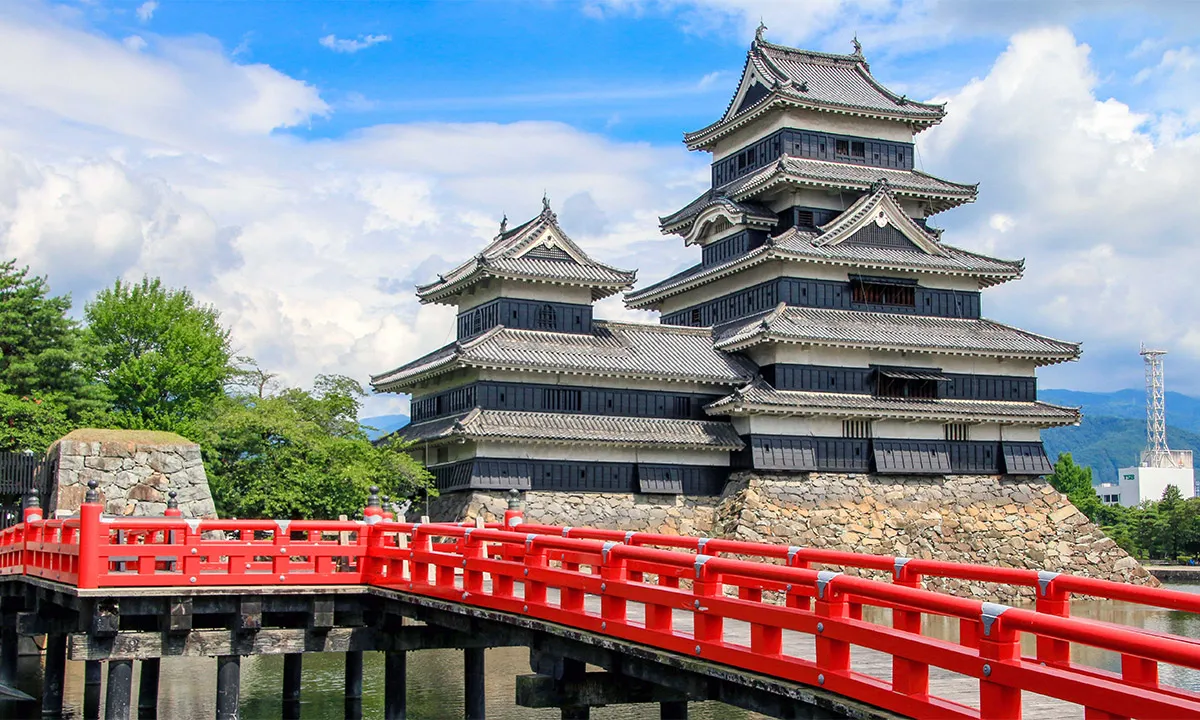 Matsumoto Castle
Matsumoto Castle
Matsumoto City, home to Matsumoto Castle, is blessed with clean spring water and many delicious delicacies. The highlands of the Nagawa area and Norikura Kogen Plateau are famous for soba production, and soba restaurants dot the neighborhoods.
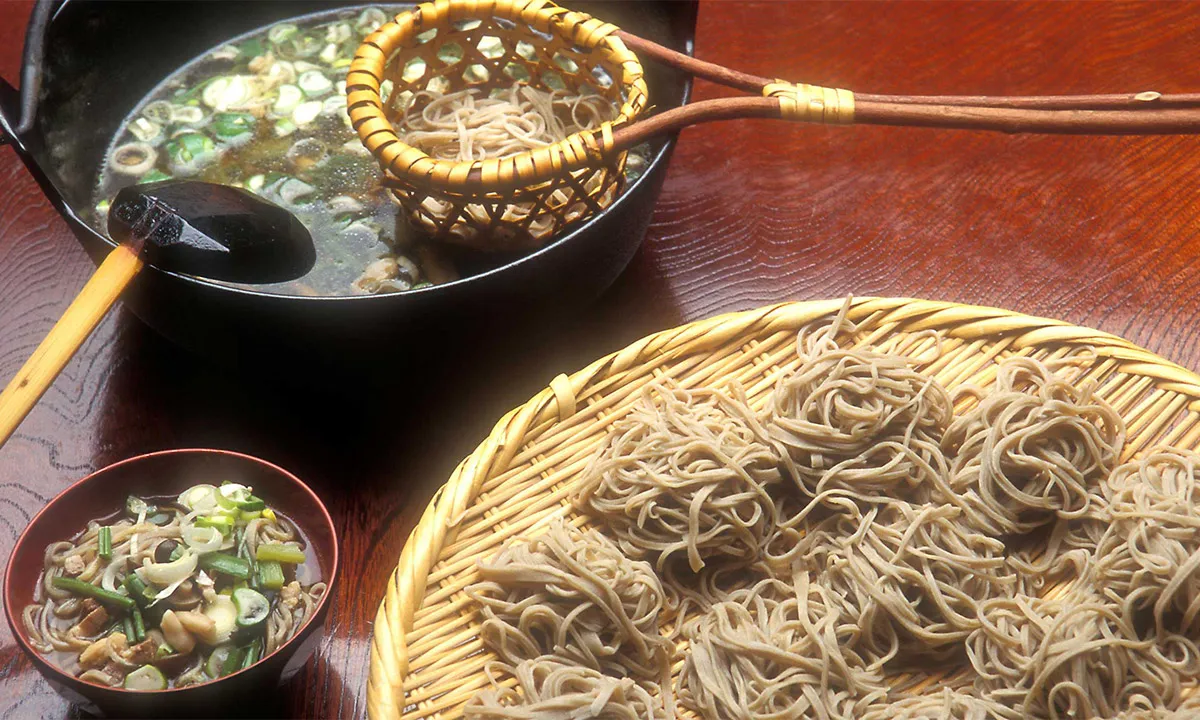 Toji Soba Noodle
Toji Soba Noodle
Cold soba is delicious and allows you to enjoy the original taste of soba, but you should try Tojisoba, a local dish of Nagawa. Also called soba-no shabu-shabu, it is a traditional feast of cold soba (buckwheat noodles), which is cooled in cold water and then served in a hot pot of soup with wild vegetables, and chicken.
 Sanzoku-yaki
Sanzoku-yaki
Another classic dish in Matsumoto City is Sanzoku-yaki. Chicken thighs marinated in garlic sauce and fried until crispy make for a hearty dish that is a must for any visitor to Matsumoto.
Iga
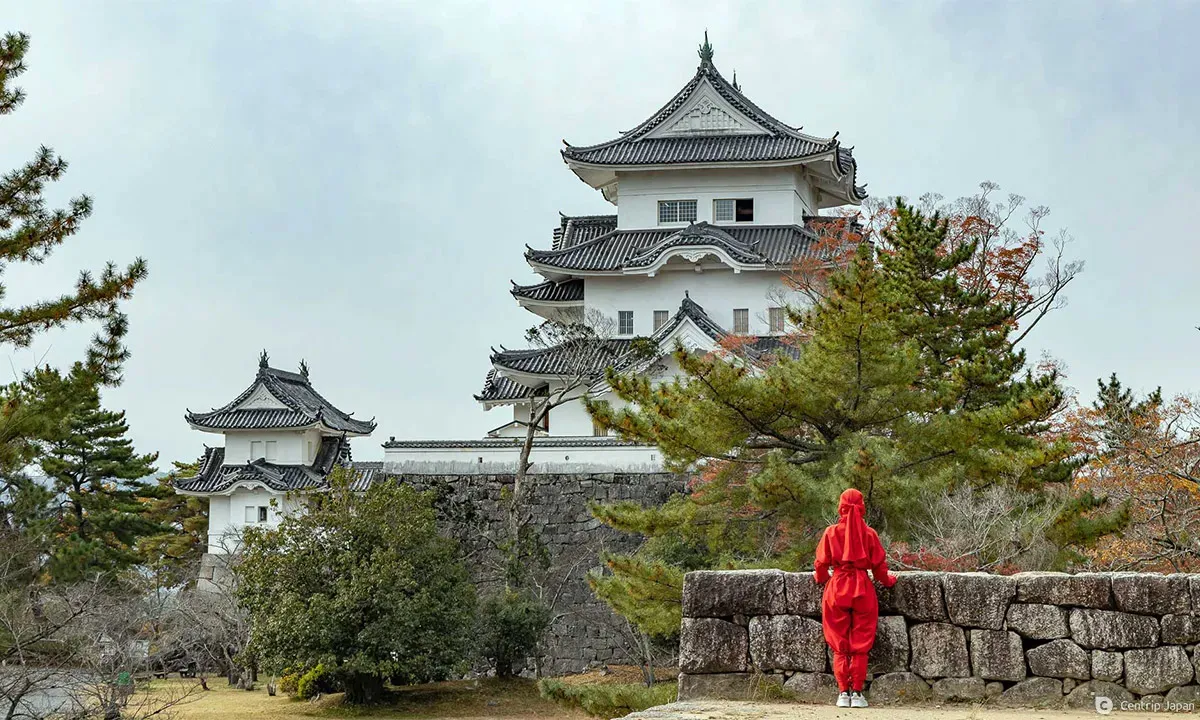 Iga Ueno Castle
Iga Ueno Castle
Iga is the home of the ninja. The ninja is still largely shrouded in mystery. One of the most popular and nutritious foods known to them was hyoro-gan, a portable food shaped into small round balls that were easy to carry. Hyoro-gan is Uruchi rice mixed with glucose to raise blood sugar and various herbal medicines for fatigue relief, relaxation, and regulating the intestines. The restaurant Ninpocho Ryori Fujiichimizu, in the mountains north of Iga City, makes a modern version of hyoro-gan. And the owner is a descendant of a ninja.
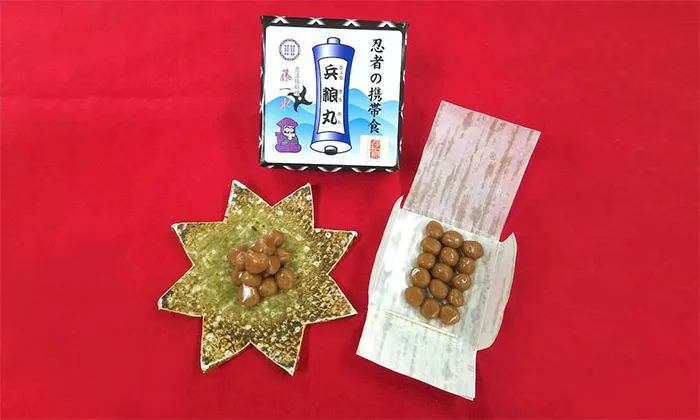 Hyoro-gan by Fuji Issui
Hyoro-gan by Fuji Issui
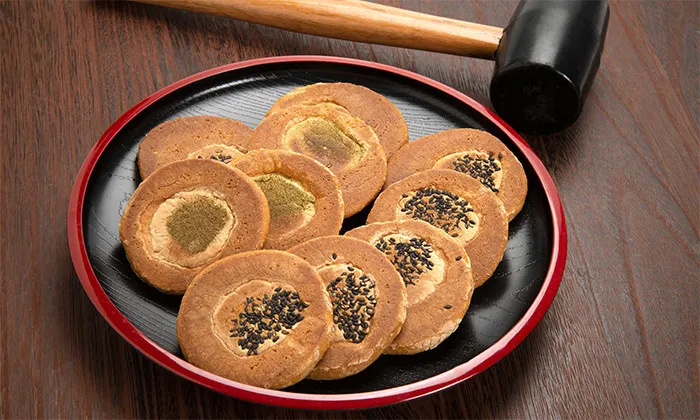 Katayaki
Katayaki
Katayaki was another food item that the ninja also carried as emergency rations. It was a slightly sweet yet, hard rice cracker. The kata in katayaki means hard in Japanese, so be extra careful not to chip your teeth. The ninja would pound the crackers with a mallet to break them open, then melt them in the mouth and eat them slowly!
Nakasendo
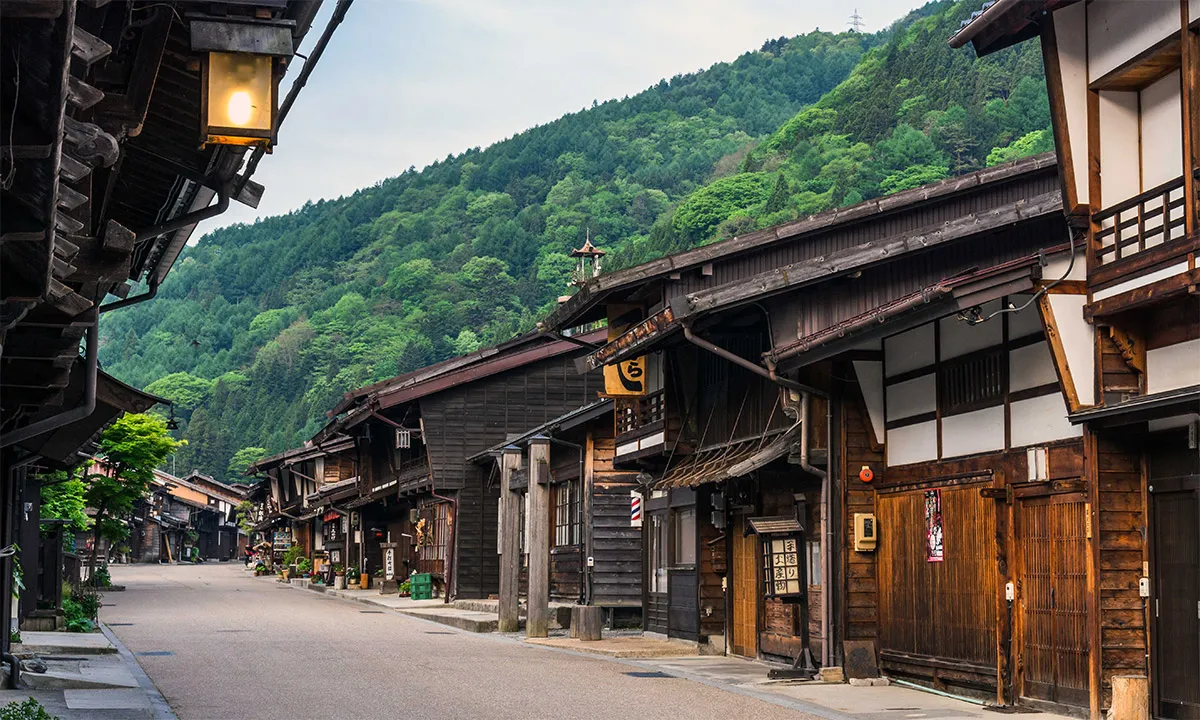 Narai-juku
Narai-juku
The Nakasendo is one of the five highways developed by Tokugawa Ieyasu in the Edo period. Several post towns popped up along this road, used as military roads for warfare and by feudal lords on their mandatory visits to the capital.
In Narai-juku (Shiojiri City, Nagano Prefecture), the longest post town in Japan, visitors can enjoy local delicacies. They include gohei-mochi (flattened rice cakes) and oyaki (vegetables in dough) while touring historic buildings, such as the Nakamura Residence, designated a National Important Cultural Property of Japan.
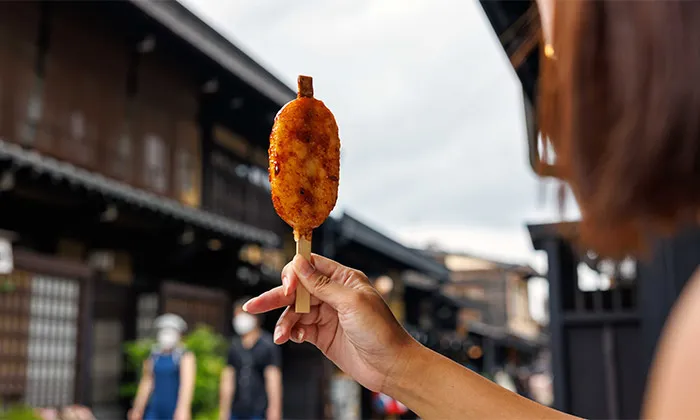 Gohei Mochi
Gohei Mochi
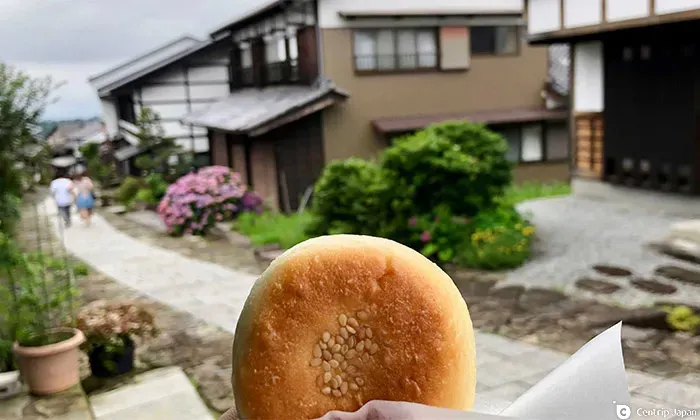 Oyaki
Oyaki
Gohei-mochi is made by mashing cooked Uruchi rice, sticking it on a bamboo skewer, and flattening it to form an oval shape. Finally, it is dipped in a sweet and spicy sauce and grilled to savory perfection. It works as both a meal and a snack. Oyaki, another dish that is both a meal and a snack, is made with local vegetables such as nozawana and pumpkin, wrapped in a dough made from wheat or buckwheat flour, and baked. Take your pick from savory or sweet it is up to you.
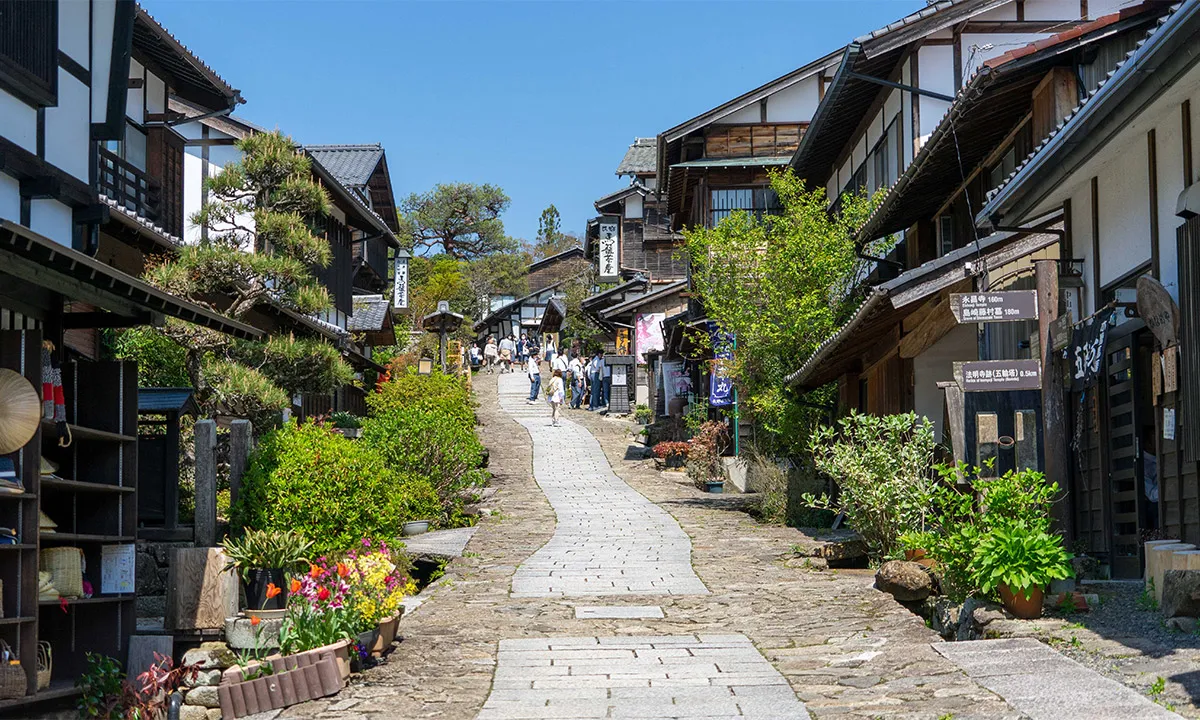 Magome-juku
Magome-juku
Magomejuku (Nakatsugawa City, Gifu Prefecture) has stone-paved streets that help the town maintain the atmosphere of the Edo period. When you tire of walking up the slope, recharge your energy with Kuri (chestnut) dishes, a local specialty.
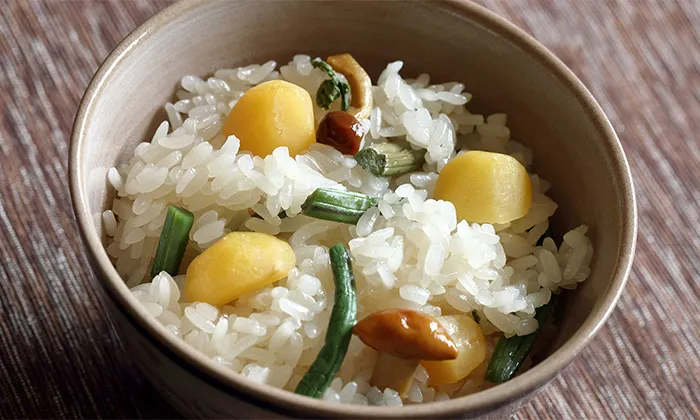 Chestnut rice with sweetened chestnuts
Chestnut rice with sweetened chestnuts
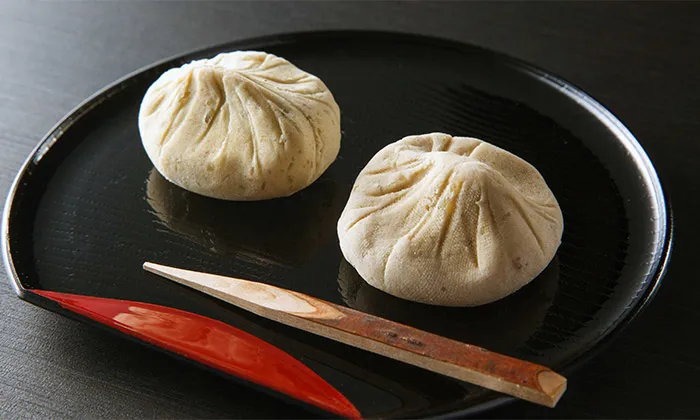 Kurikinton
Kurikinton
Visitors can choose from an array of options, including kuri okowa (rice topped with chestnuts), kuri manju (sweet bean buns stuffed with chestnuts), and kuri soft-serve ice cream. But only those who visit in autumn can savor the famous kuri kinton (sweetened chestnut dumplings).
Hida Takayama
 Takayama Festival in Spring
Takayama Festival in Spring
In downtown Takayama City, the atmosphere of an Edo-period castle town, including the Takayama Jinya (castle camp), still prevails today. Hida beef is a must-try here. Whether you prefer steak, yakiniku (grilled beef), or hamburger, there is sure to be a restaurant in the castle town area to suit your tastes.
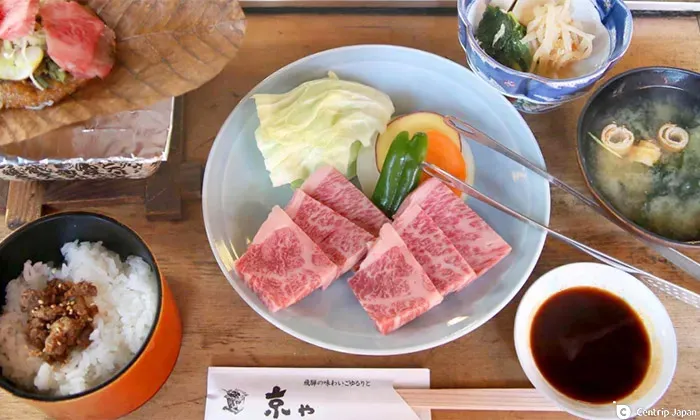 Hida beef
Hida beef
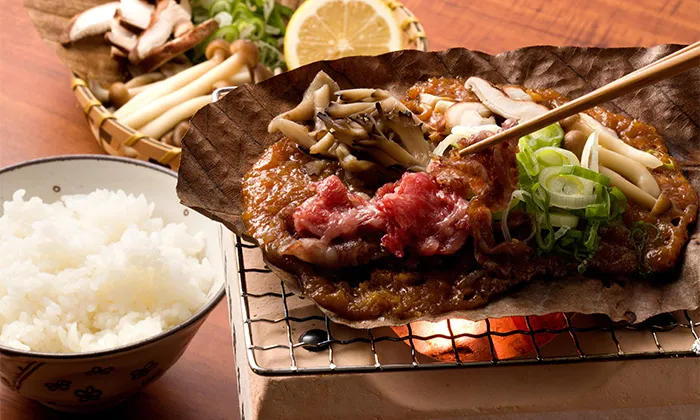 Hoba miso
Hoba miso
Hida Takayama has another local delicacy called hoba miso, grilled miso on a magnolia leaf. The unique aroma of the leaves, coupled with the savory flavor of the grilled miso, makes it an irresistible snack. If your budget allows, try out a luxurious evolution of the dish that includes Hida beef, mushrooms, and wild vegetables dipped in miso and grilled together.
Please read this article for other gourmet foods you should try in Hida Takayama.
Wrap-up
These are just a few dishes enjoyed by the samurai and ninja of the Chubu region. There are more out there waiting for you to try. The foods we've introduced here are a great way to begin experiencing the historic cuisine of Japan. So sit back, take another bite, and think back to the days when the samurai and ninja roamed Japan.
Click here to get the latest information on Central Japan.Centrip Japan - Nagoya and Chubu Information

